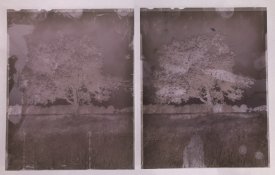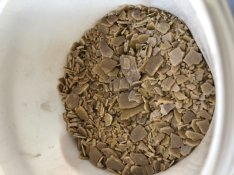iakustov
Member
Today I mixed a fresh stock of Pyrocat-M (stock A: metol 2.5g/l, metabisulfite 10g/l, pyrocatechin 50g/l) and developed four FP4 4x5 sheets with standard dilution (I use 20% sodium carbonate for stock B so my dilution is 1+5+94). I presoak for a couple of mins.
They came out ugly - very thin, with fingerprints, uneven density / stain across the sheet.

Per my understanding any fingerprints should be gone during development, I never had such problems before that. Last time I prepared such a stock was a year ago and it worked fine, I have not changed anything since then except for the fixer - previously used Rapid Fixer from Ilford, now use rapid neutral fixer hypo + ammonium chloride based (Agfa 304 analog by Rudeofus, he posted the formula some months ago).
I can say I trust my exposure, development techniques as today I developed some sheets of other film in XTOL just before that. I also trust Metol as I mix other metol-based developers with no issues.
I measured pH of developer solution and it is 11. Fixer’s pH is 6.4.
Can pyrocatechin go bad even if stored in tight container? This is how it looks like now:

It seems to smell like it should be, but more of like gouache paints though.
They came out ugly - very thin, with fingerprints, uneven density / stain across the sheet.

Per my understanding any fingerprints should be gone during development, I never had such problems before that. Last time I prepared such a stock was a year ago and it worked fine, I have not changed anything since then except for the fixer - previously used Rapid Fixer from Ilford, now use rapid neutral fixer hypo + ammonium chloride based (Agfa 304 analog by Rudeofus, he posted the formula some months ago).
I can say I trust my exposure, development techniques as today I developed some sheets of other film in XTOL just before that. I also trust Metol as I mix other metol-based developers with no issues.
I measured pH of developer solution and it is 11. Fixer’s pH is 6.4.
Can pyrocatechin go bad even if stored in tight container? This is how it looks like now:

It seems to smell like it should be, but more of like gouache paints though.







 .
.
